Failure Analysis of a Concrete Anchor under Severe Seismic Action
Abstract
1. Introduction
2. Response Modification and Overstrength Factors
3. Pushover Simulation to Quantify the Factors of Interest
4. Dynamic Simulation under DS-0050
5. Conclusions
Author Contributions
Funding
Institutional Review Board Statement
Informed Consent Statement
Data Availability Statement
Conflicts of Interest
References
- Korea Electric Power Corporation. Earthquake Resistant Design Standard of Electric Power Facilities (DS-0050); Korea Electric Power Corporation: Naju, Korea, 2021. [Google Scholar]
- American Concrete Institute. Building Code Requirements for Structural Concrete and Commentary (ACI 318-14); American Concrete Institute: Farmington Hills, MI, USA, 2014; Chapter 17; pp. 221–261. [Google Scholar]
- American Society of Civil Engineers. Minimum Design Loads and Associated Criteria for Buildings and Other Structures (ASCE/SEI 7-16); American Society of Civil Engineers: Reston, VA, USA, 2016; p. 889. [Google Scholar]
- Ministry of Land, Infrastructure and Transport. Anchoring to Concrete (KDS 14 20 54); The Korea Communications Standards Commission: Seoul, Korea, 2016; pp. 1–16. (In Korean) [Google Scholar]
- FEMA. 2015 NEHRP Recommended Seismic Provisions: Design Examples (FEMA P-1051), Building Seismic Safety Council; A Council of the National Institute of Building Sciences: Washington, DC, USA, 2016; p. 995. [Google Scholar]
- Morgan, R.T. Changes in ACI 318 Anchoring to Concrete Seismic Provisions. Struct. Mag. 2016, 24–27. [Google Scholar]
- American Society of Civil Engineers. Seismic Design Criteria for Structures, Systems, and Components in Nuclear Facilities (ASCE/SEI 43-05); American Society of Civil Engineers: Reston, VA, USA, 2005; p. 81. [Google Scholar]
- European Organisation for Technical Appovals. Design of Metal Anchors for Use in Concrete under Seismic Actions, EOTA TR45; European Organisation for Technical Assessment: Brussels, Belgium, 2013; pp. 1–16. [Google Scholar]
- Ishiyama, Y. Introduction to Earthquake Engineering and Seismic Codes in the World; Hokkaido University: Sapporo, Japan, 2011; pp. 1–115. [Google Scholar]
- Julián, C.; Hugo, H.B.; Astrid, R.F. Analysis of the Earthquake-Resistant Design Approach for Buildings in Mexico. Ing. Investig. Y Tecnol. 2014, 14, 151–162. [Google Scholar] [CrossRef][Green Version]
- Johnson, T.P. Evaluation of Seismic Overstrength Factors for Anchorage into Concrete of Nonstructural Components. Ph.D. Thesis, University of California, San Diego, CA, USA, 2017. [Google Scholar]
- American Concrete Institute. Guide to the Concrete Capacity Design (CCD) Method-Embedment Design Examples (ACI 349.2R-07); American Concrete Institute: Farmington Hills, MI, USA, 2007; p. 95. [Google Scholar]
- American Concrete Institute. Guide for Design of Anchorage to Concrete: Examples Using ACI 318 Appendix D (ACI 355.3R-11); American Concrete Institute: Farmington Hills, MI, USA, 2011; p. 128. [Google Scholar]
- Korean Concrete Institute. Guide and Examples for Design of Anchorage to Concrete (Written in Korean), 2nd ed.; KCI: Seoul, Korea, 2018; pp. 1–343. [Google Scholar]
- Eligehausen, R. Behavior, Design and Testing of Anchors in Cracked Concrete, ACI SP 130-5. Univ. Stuttg. 1991, 53, 123–175. [Google Scholar]
- Eligehausen, R.; Bouska, P.; Cervenka, V.; Pukl, R. Size effect of the concrete cone failure load of anchor bolts. In Fracture Mechanics of Concrete Structures: FraMCoS1; Elsevier Applied Science: London, UK, 1992; pp. 517–525. [Google Scholar]
- Hoehler, M.S.; Mahrenholtz, P.; Eligehausen, R. Behavior of Anchors in Concrete at Seismic-Relevant Loading Rates. ACI Struct. J. 2011, 238–247. [Google Scholar]
- Eligehausen, R.; Sharma, A.; Hofmann, J. On Seismic Safety Issues of Cast-in and Post-Installed Anchors in Nuclear Power Plants. In Proceedings of the Technical Innovation in Nuclear Civil. Engineering—TINCE 2013, Paris, France, 28–31 October 2013. [Google Scholar]
- Hariyadi, M.S.; Sonoda, Y. Experimental analysis of anchor bolt in concrete under the pull-out loading. Procedia Eng. 2017, 171, 926–933. [Google Scholar] [CrossRef]
- Ožbolt, J.; Elighausen, R.; Reinhardt, H. Size effect on the concrete cone pull-out load. Fract. Scaling 1999, 95, 391–404. [Google Scholar] [CrossRef]
- Bogdanić, A.; Casucci, D.; Ožbolt, J. Numerical andExperimental Investigation on Concrete Splitting Failure of Anchor Channels. CivilEng 2021, 2, 502–522. [Google Scholar] [CrossRef]
- Spyridis, P.; Olalusi, O.B. Predictive Modelling for Concrete Failure at Anchorages Using Machine Learning Techniques. Materials 2021, 14, 62. [Google Scholar] [CrossRef] [PubMed]
- Fisher, J.M.; Kloiber, L.A. Base Plate and Anchor Rod Design, 2nd ed.; American Institute of Steel Construction: Chicago, IL, USA, 2006; pp. 1–69. [Google Scholar]
- Lee, D.-Y.; Goel, S.C.; Stojadinovic, B. Exposed Column-Base Plate Connections Bending About Weak Axis: I. Numerical Parametric Study. Steel Struct. 2008, 8, 11–27. [Google Scholar]
- Lee, J.H.; Lim, J.E. Nonlinear Analysis of Cyclically Loaded Concrete-Steel Structures Using an Anchor Bond-Slip Model. KSCE Struct. Eng. 2009, 29, 495–501. [Google Scholar]
- Tsavdaridis, K.D.; Shaheen, M.A.; Baniotopoulos, C.; Salem, E. Analytical Approach of Anchor Rod Stiffness and Steel Base-Plate Calculation under Tension. Structures 2016, 5, 207–218. [Google Scholar] [CrossRef]
- Kang, H.; Kim, J. Response of a steel column-footing connection subjected to vehicle impact. Struct. Eng. Mech. 2017, 63, 125–136. [Google Scholar]
- Díaz, H.; Nuñez, E.; Oyarzo-Vera, C. Monotonic Response of Exposed Base Plates of Columns: Numerical Study and a New Design Method. Metals 2020, 10, 396. [Google Scholar] [CrossRef]
- Dizhur, D.; Simkin, G.; Giaretton, M.; Loporcaro, G.; Palermo, A.; Ingham, J. Performance of winery facilities during the 14 November 2016 Kaikōura earthquake. J. Bull. N. Z. Soc. Earthq. Eng. 2017, 50, 206–207. [Google Scholar]
- Crawford, K.N. Standard Seismic Resistant Details for Industrial Tanks and Silos; Murray-North Limited: Auckland, New Zealand, 1990; pp. 1–74. [Google Scholar]
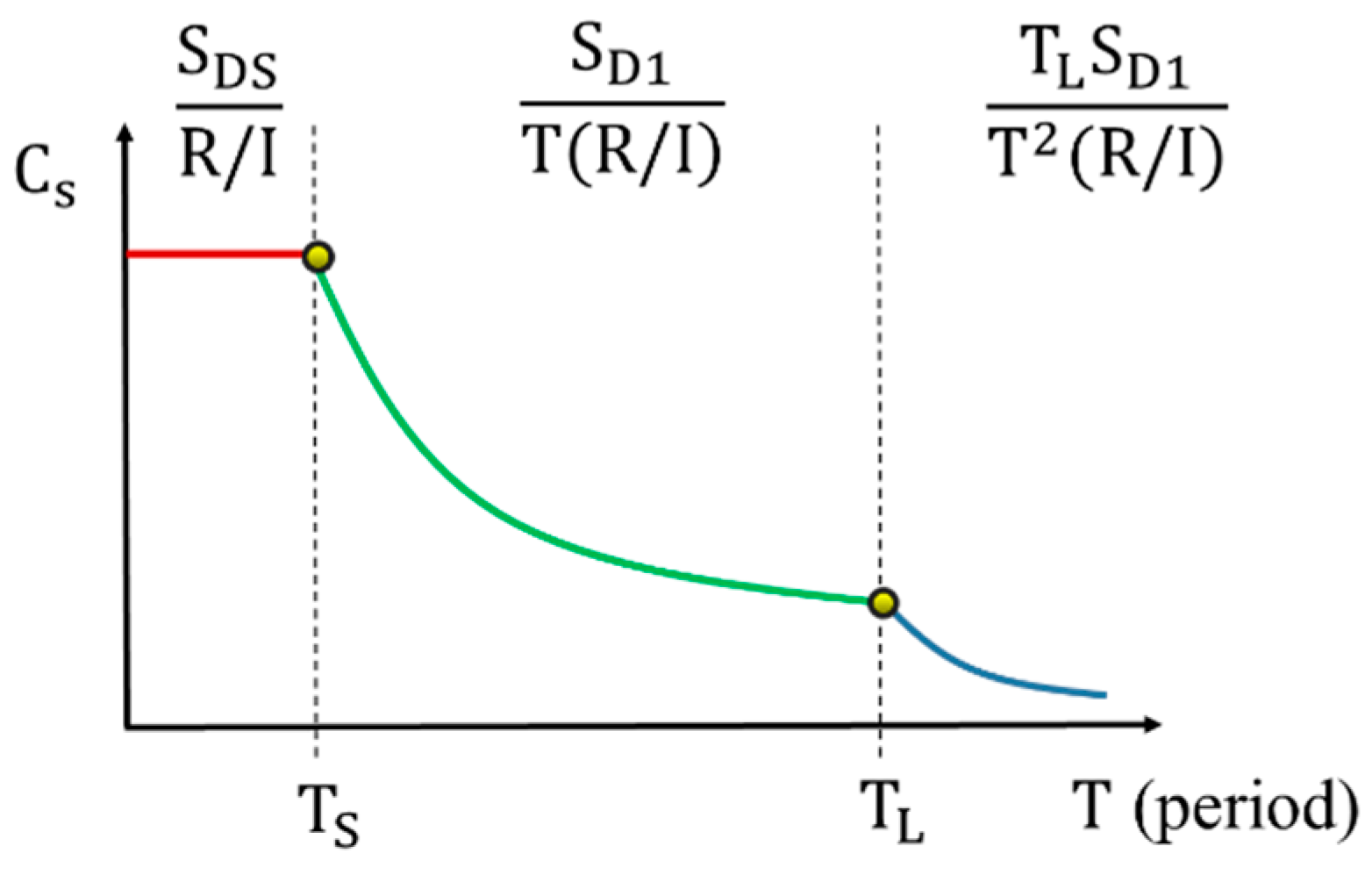
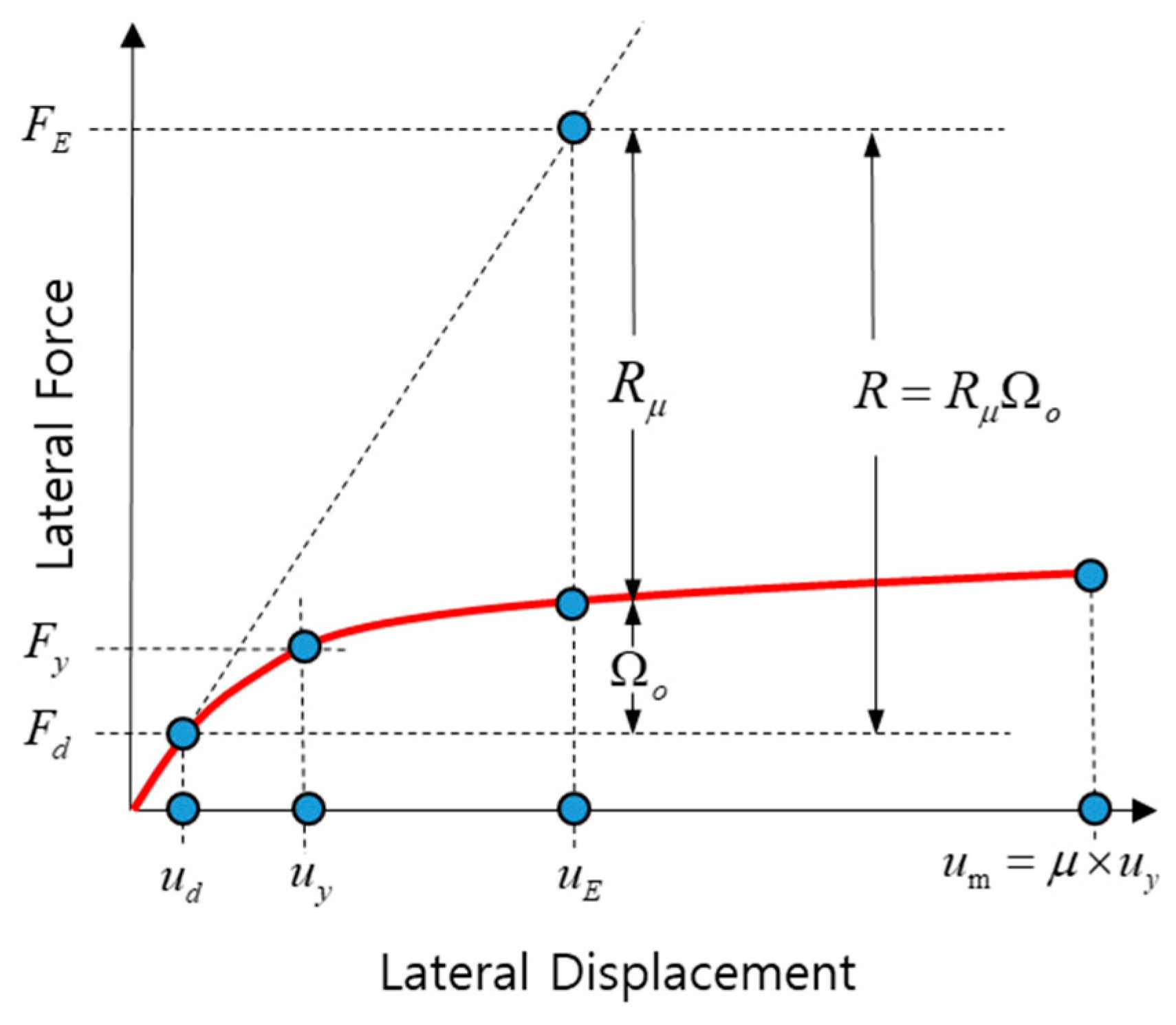
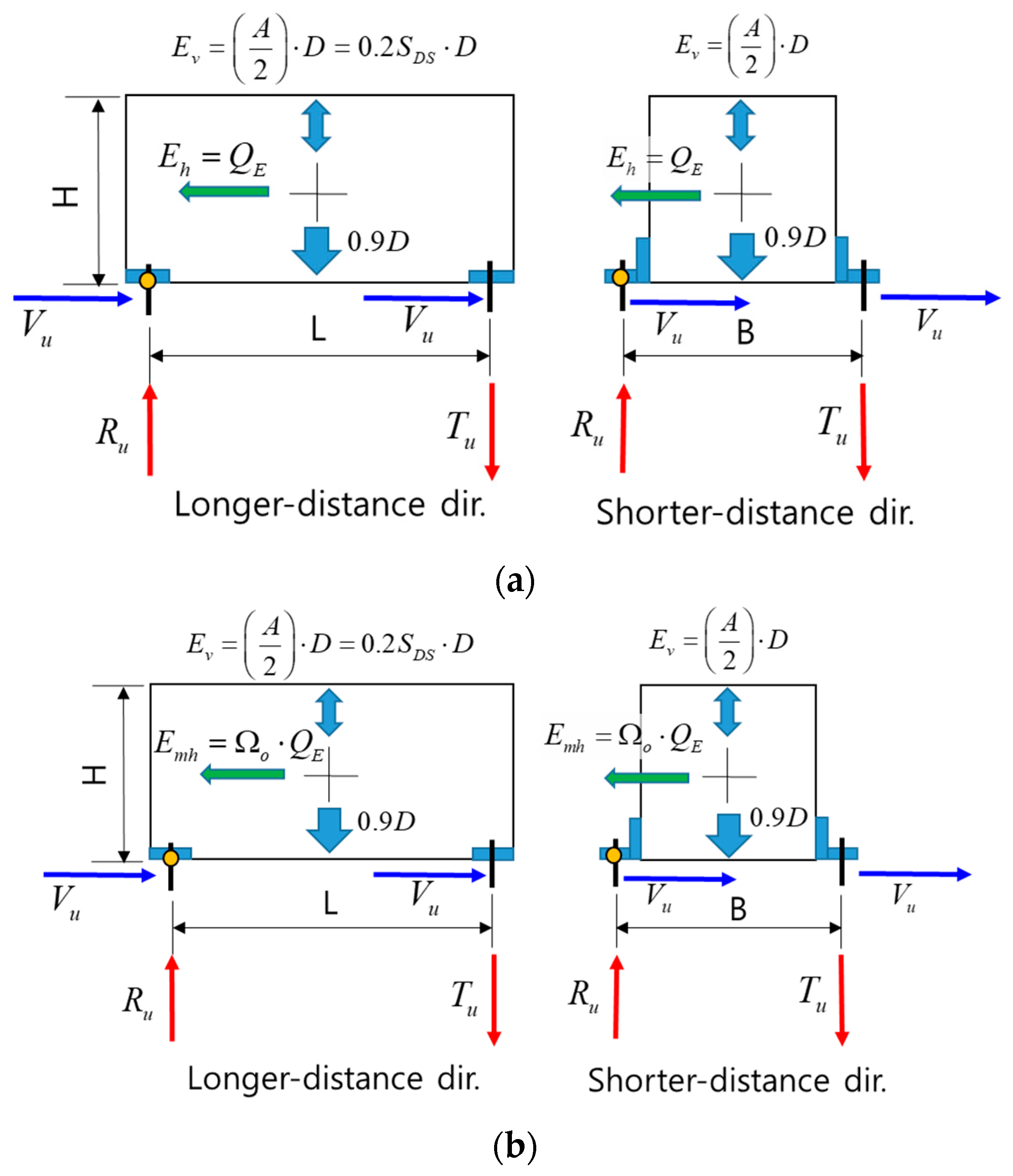
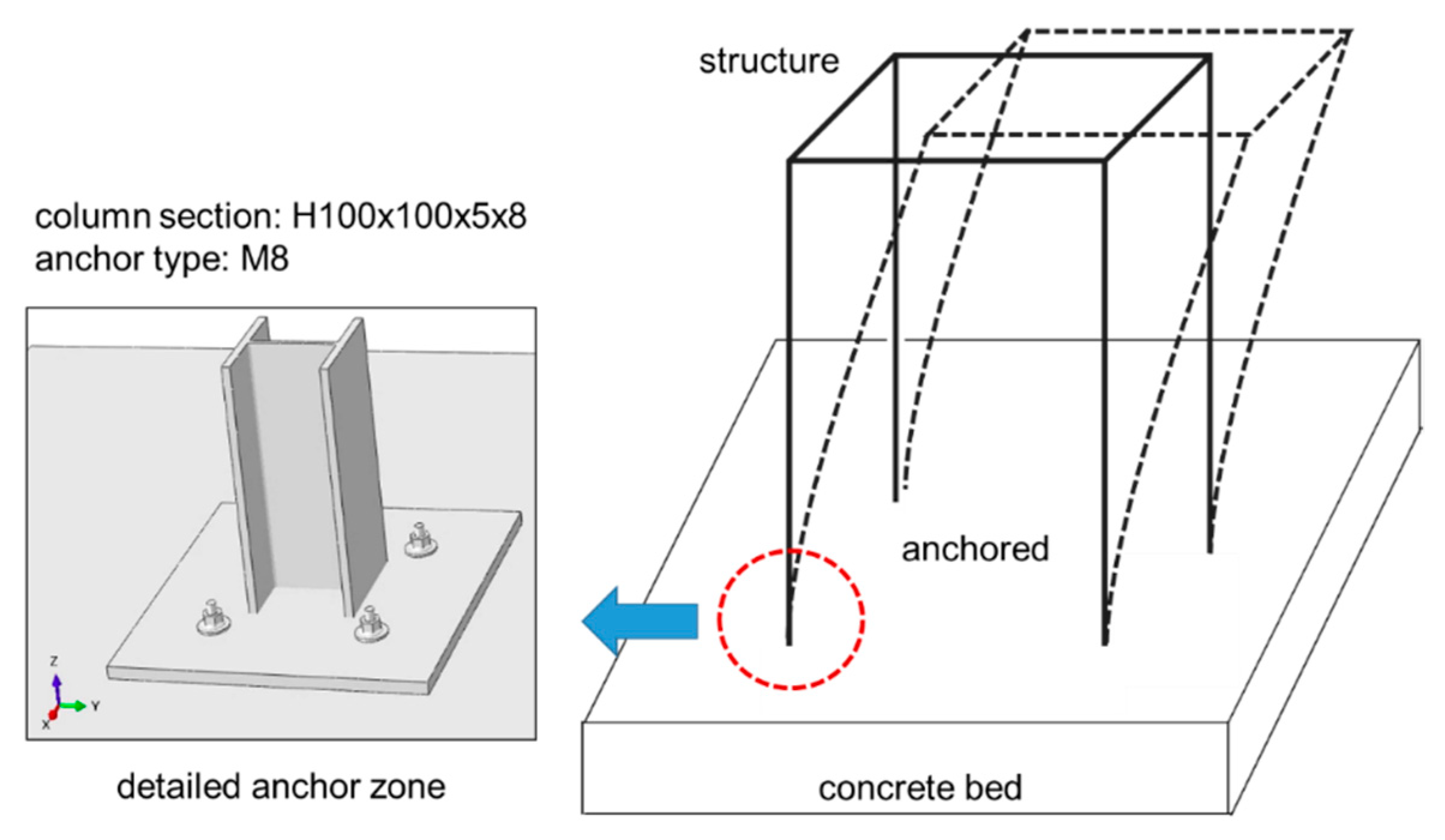
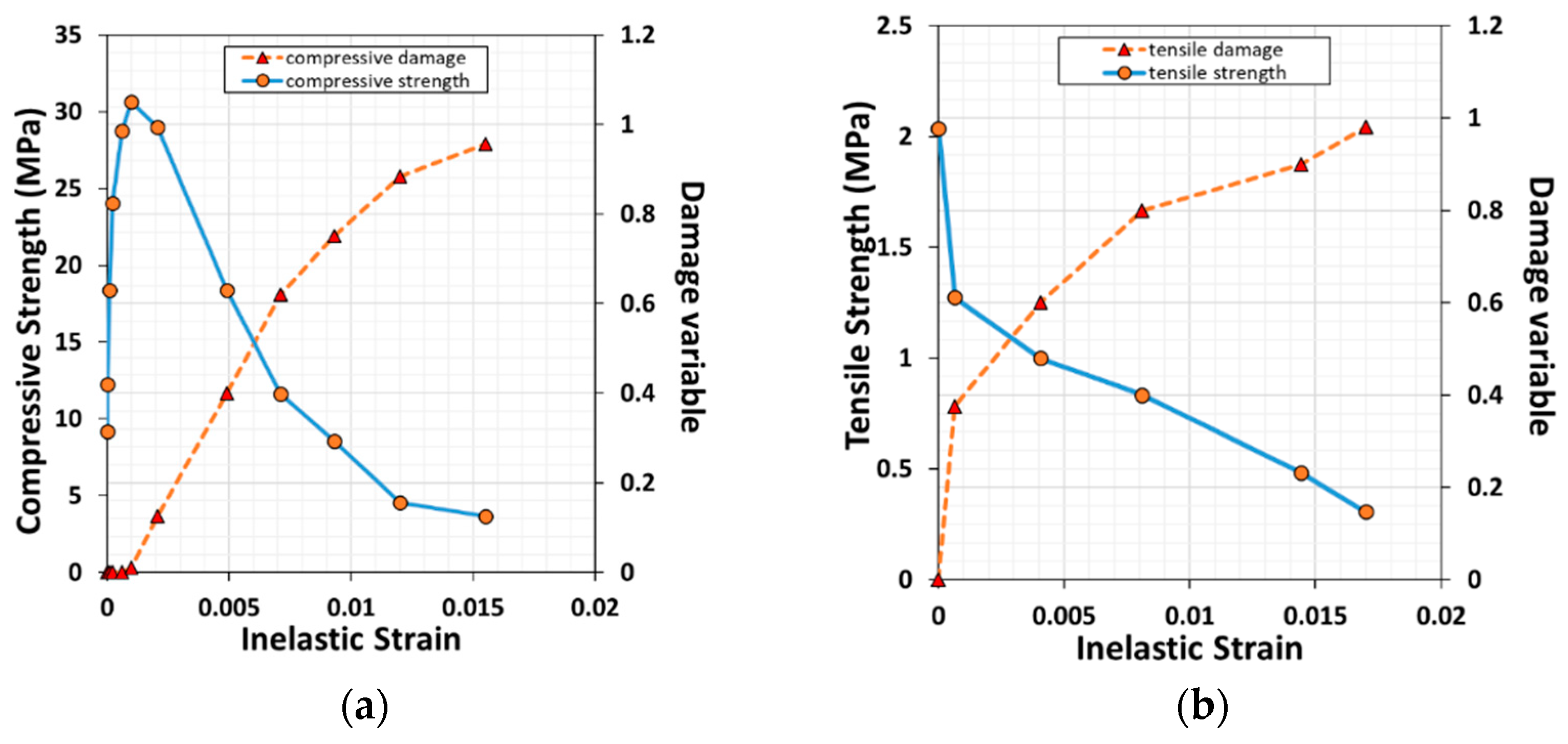
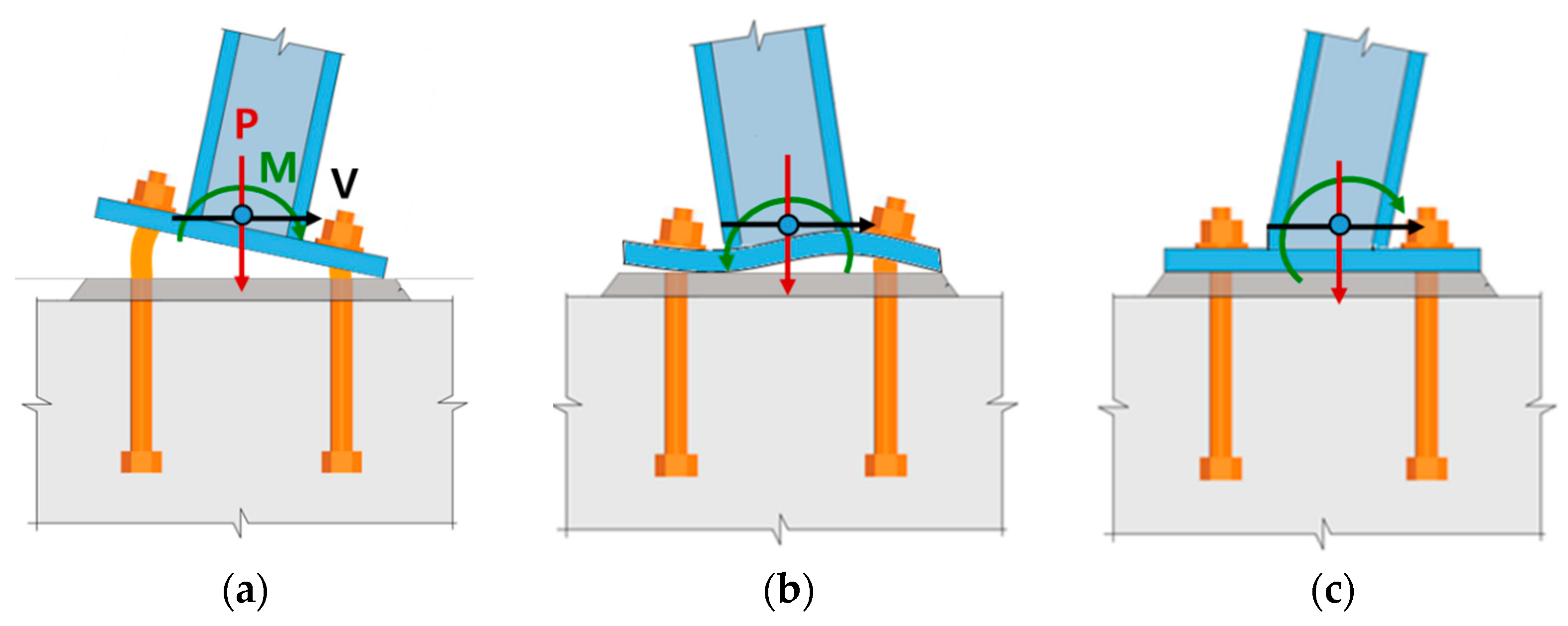

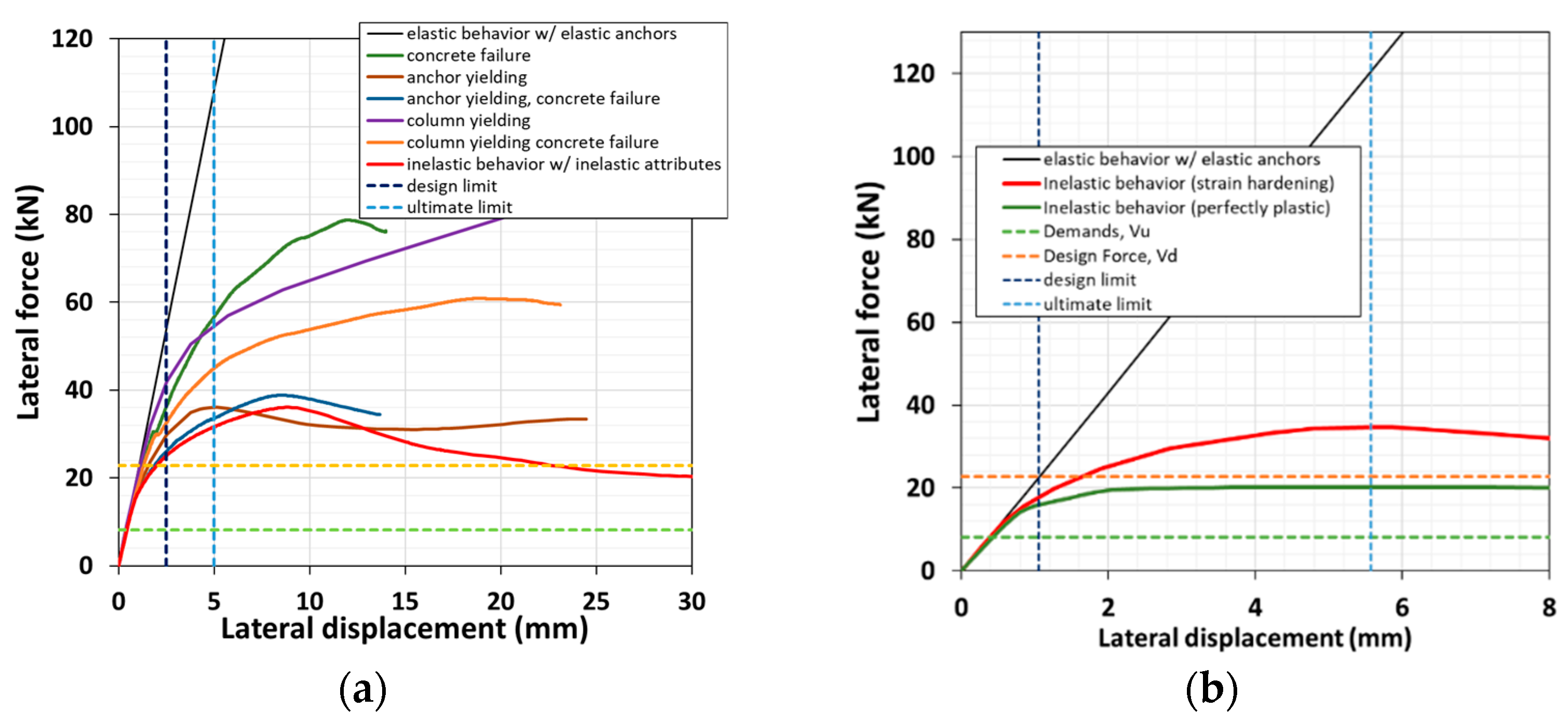
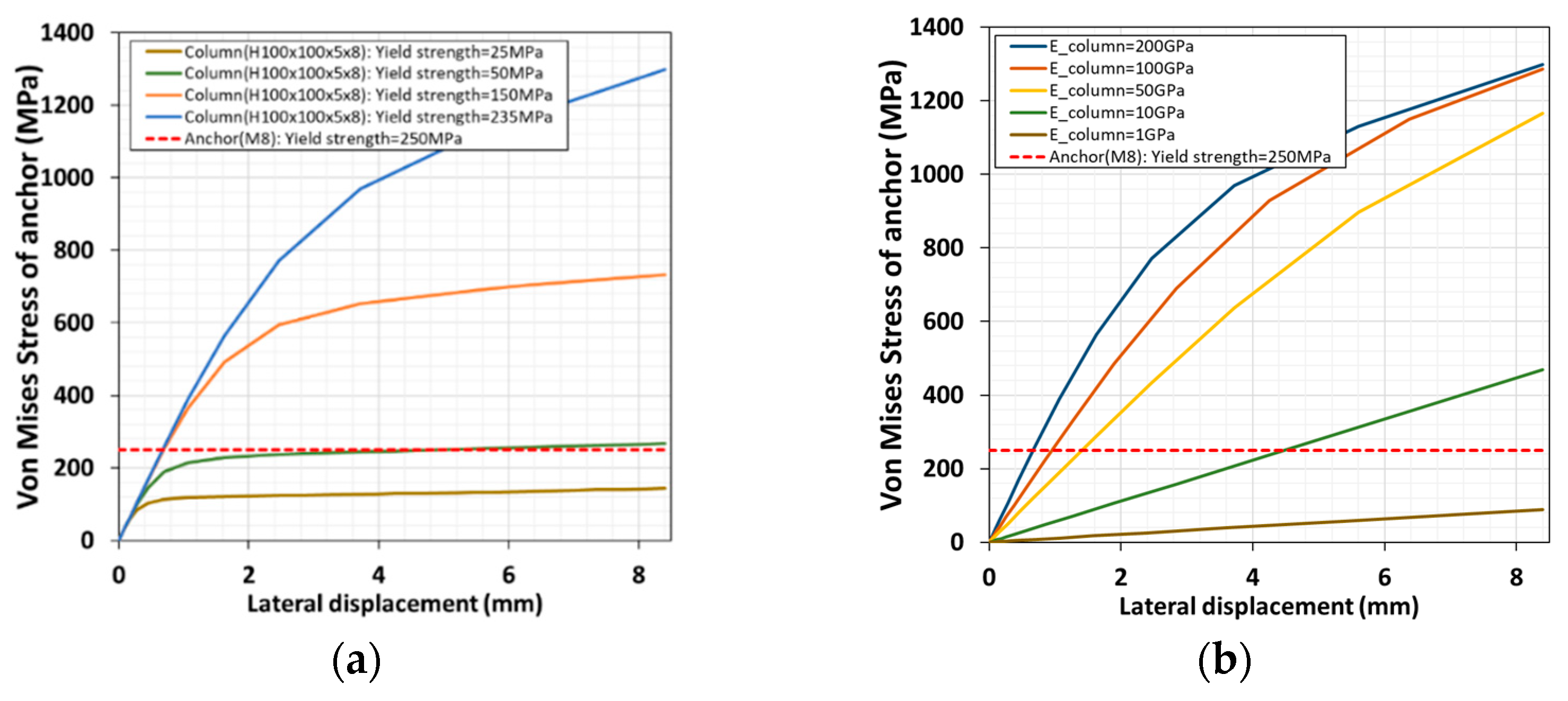

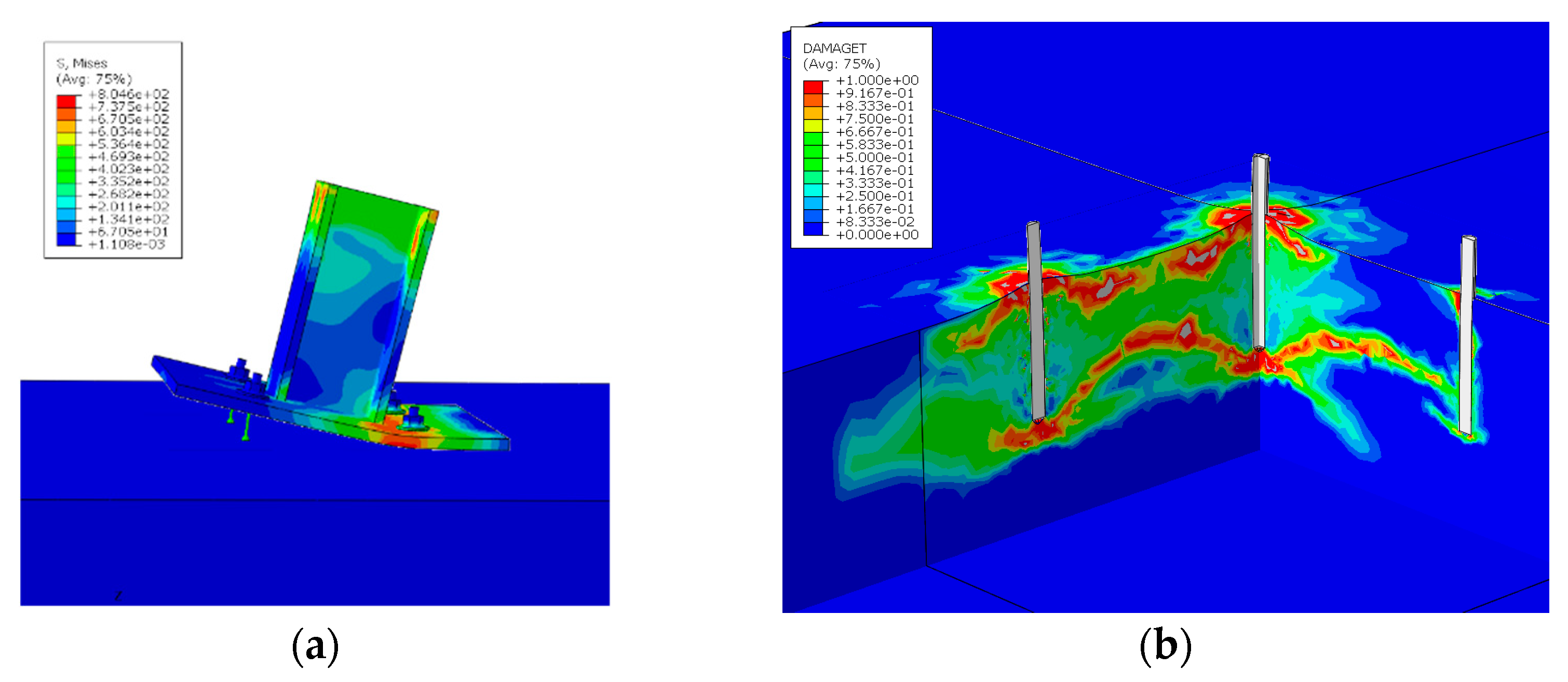
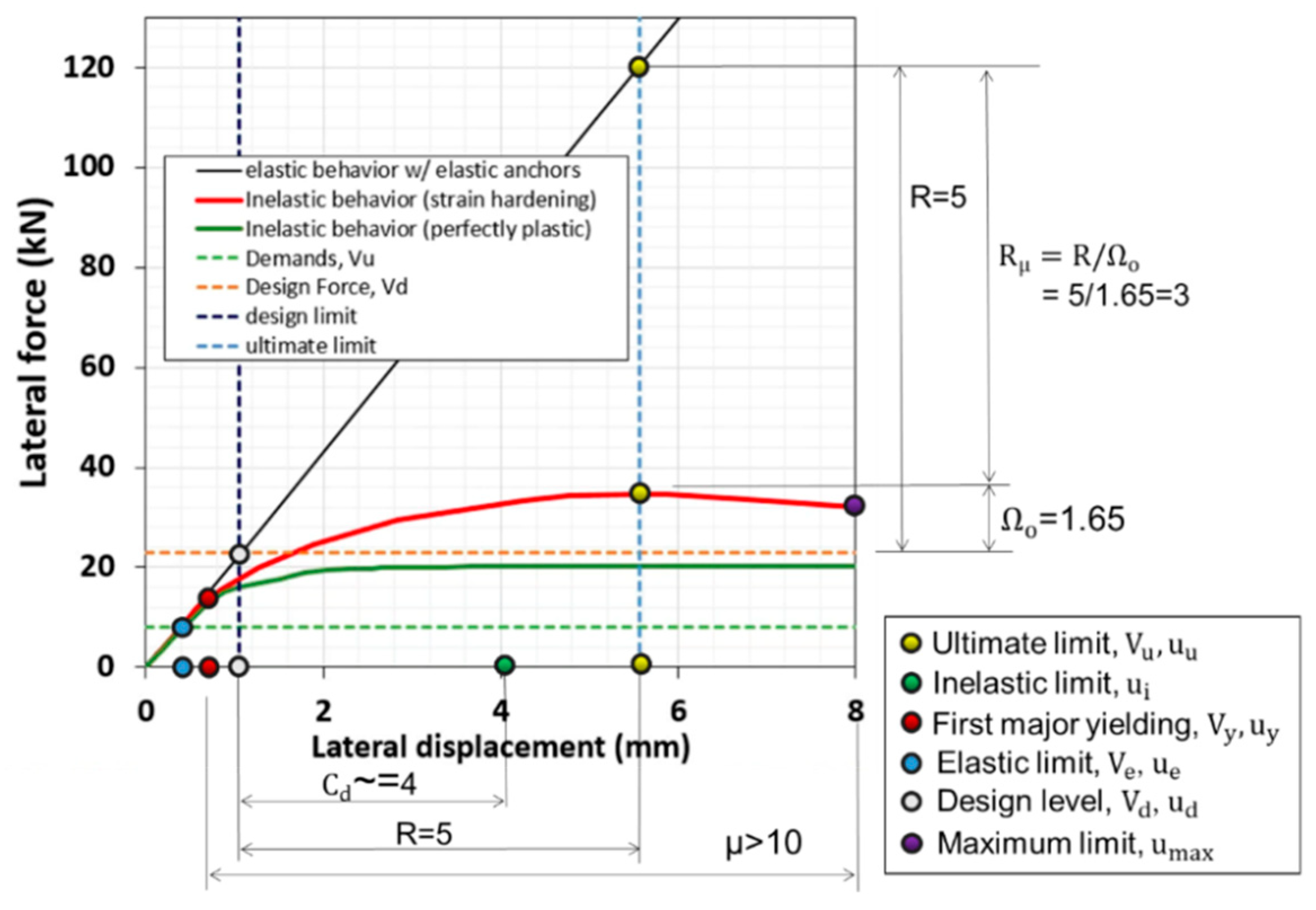
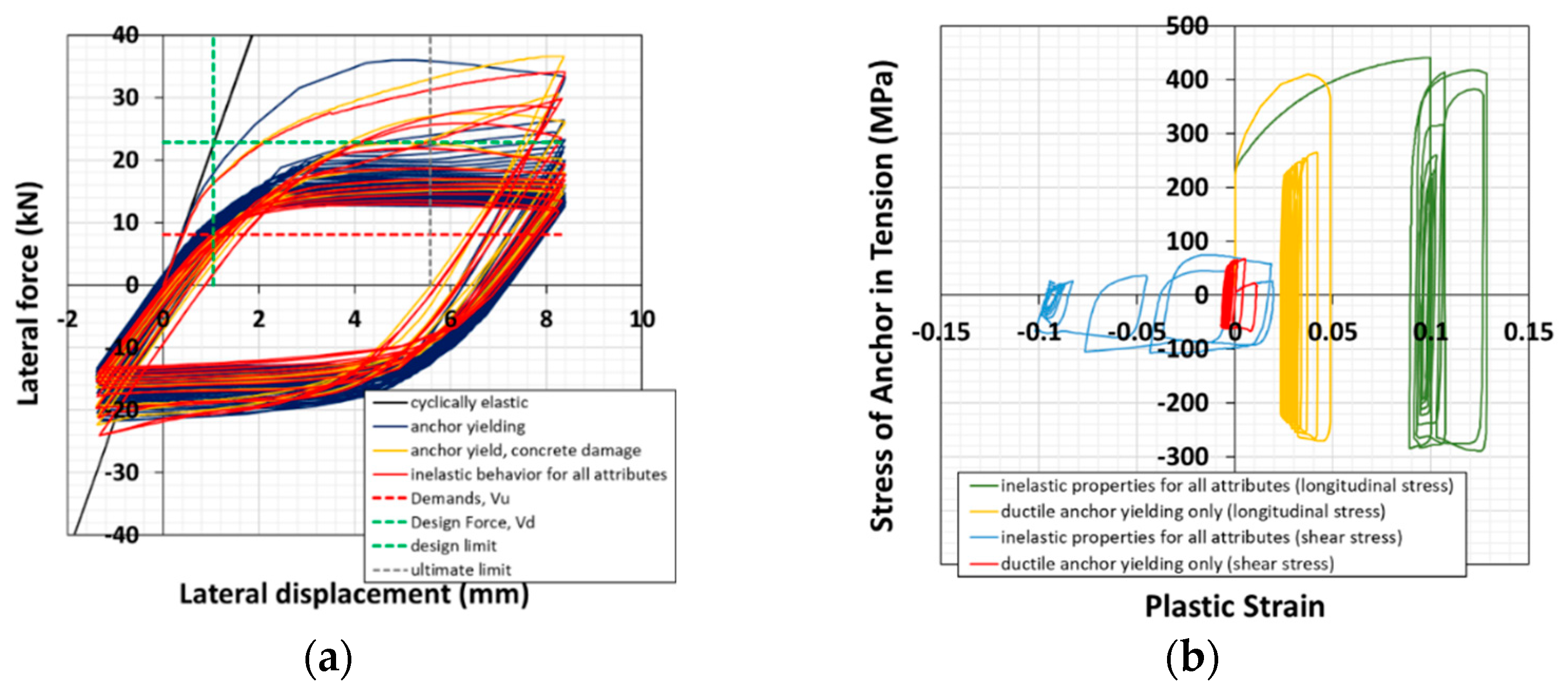
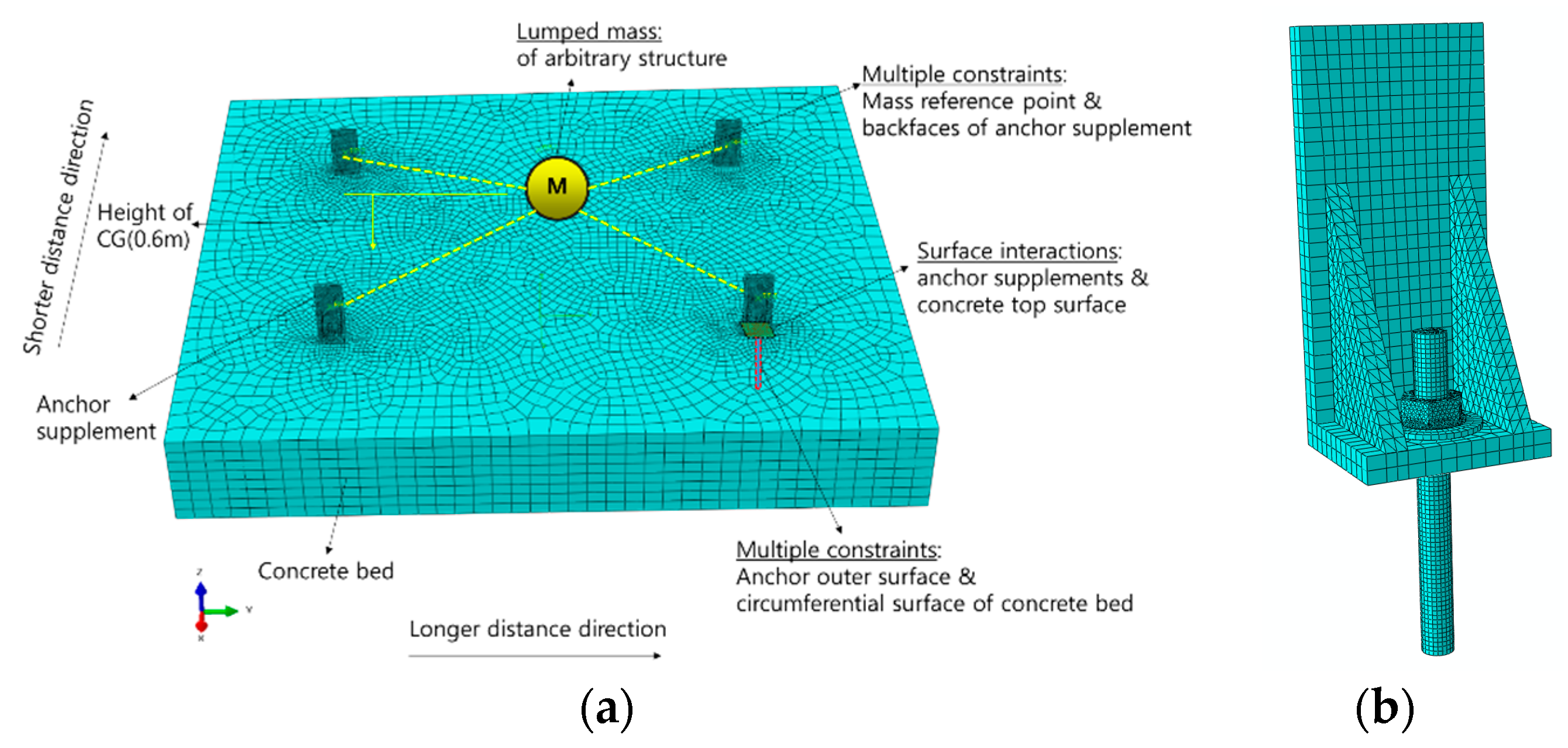
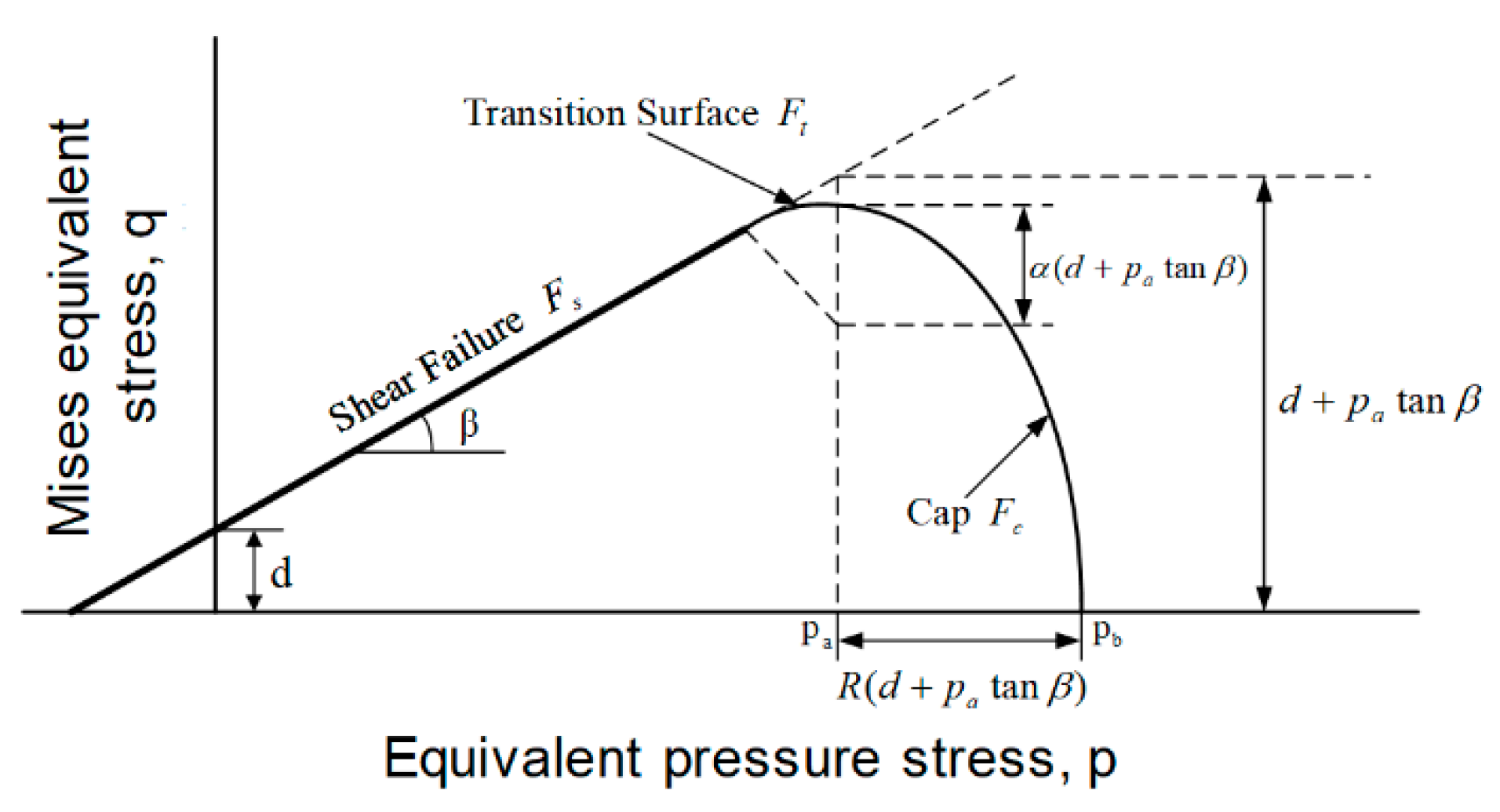
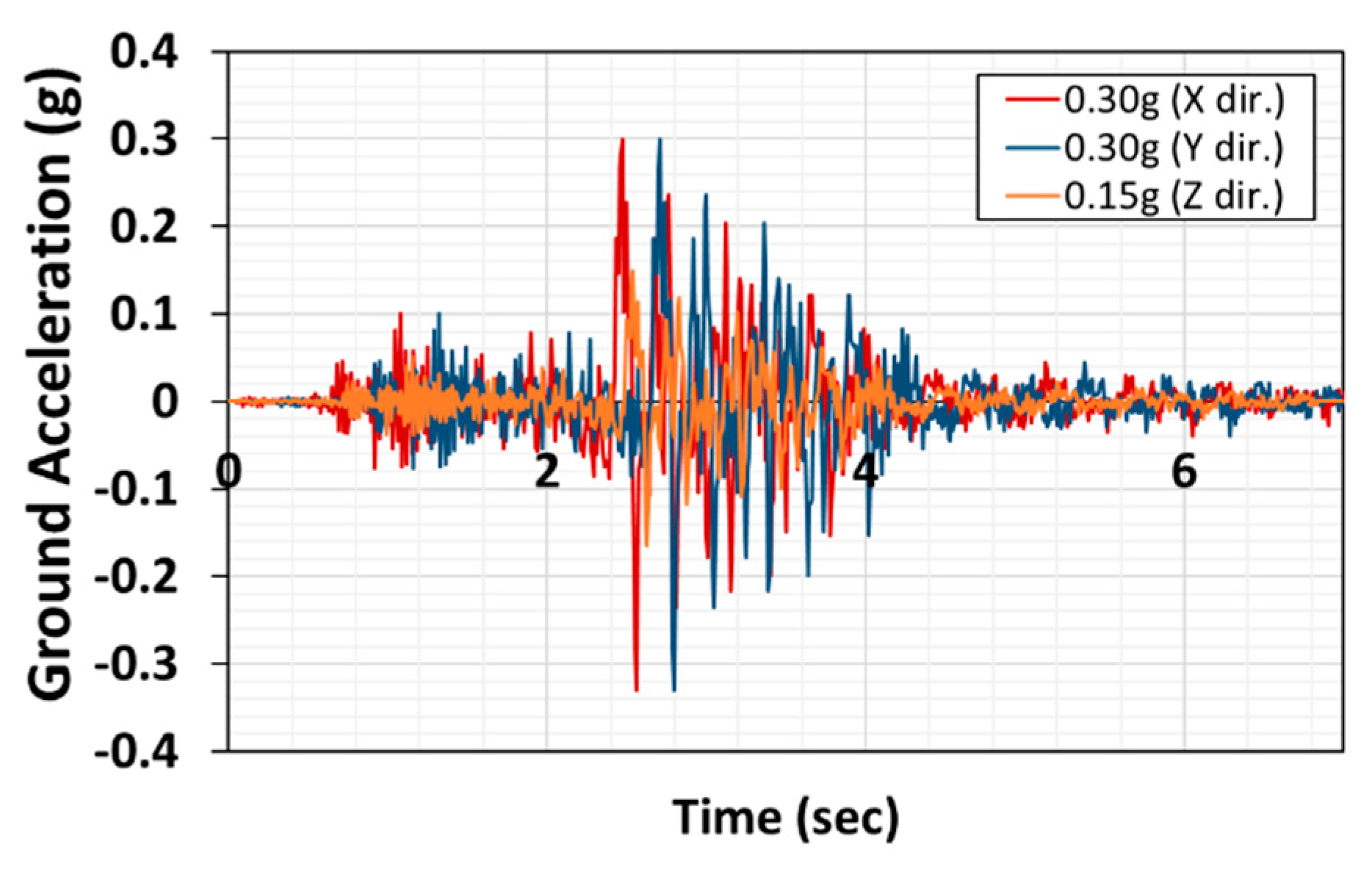
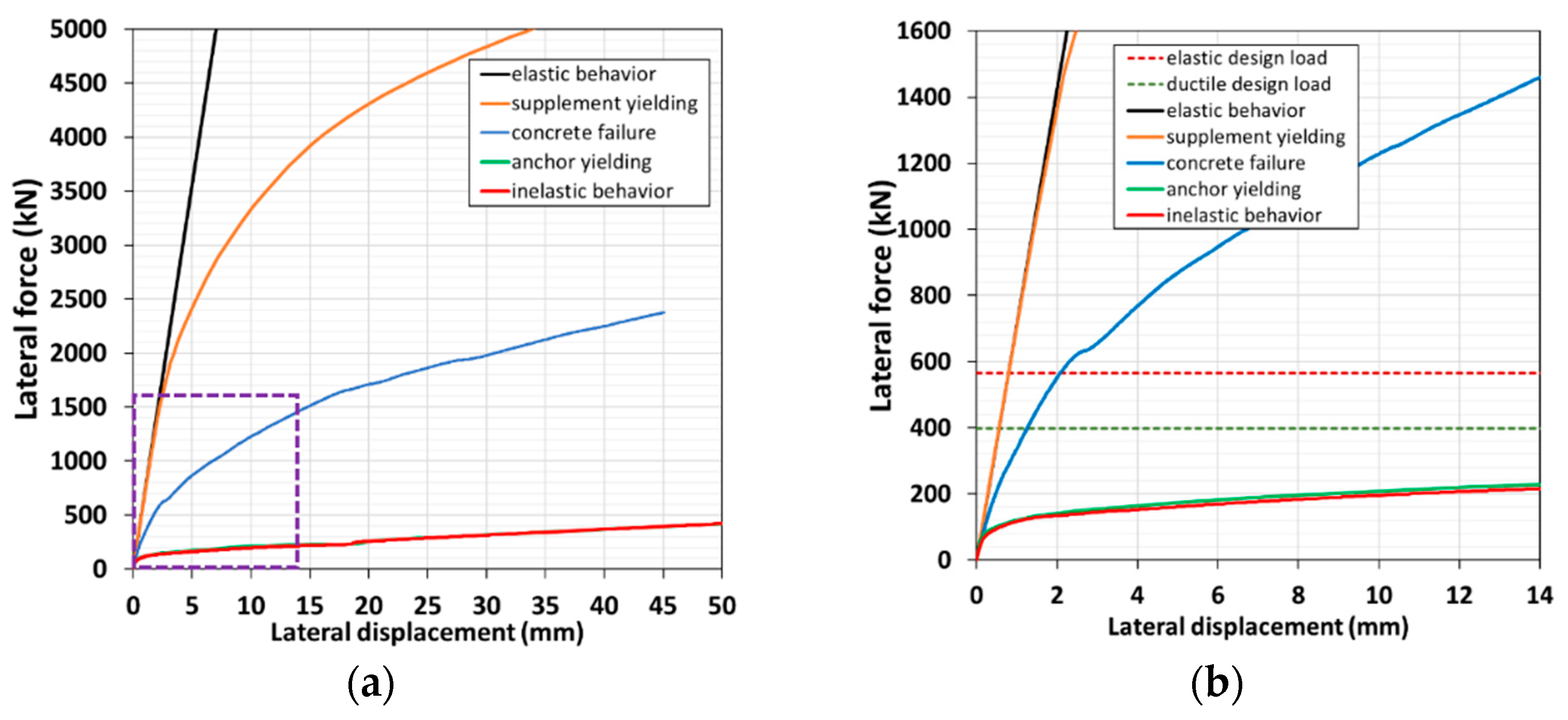
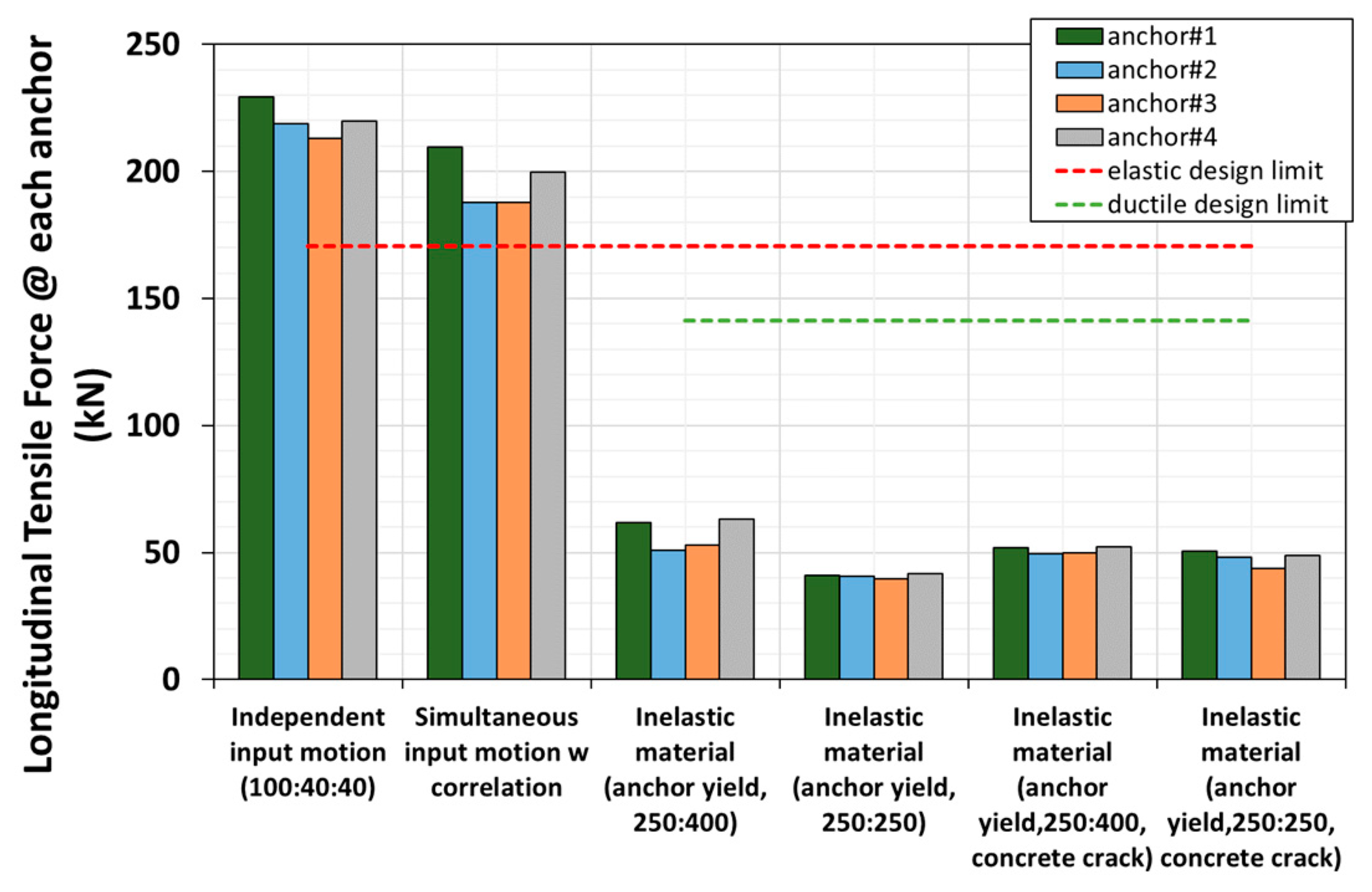
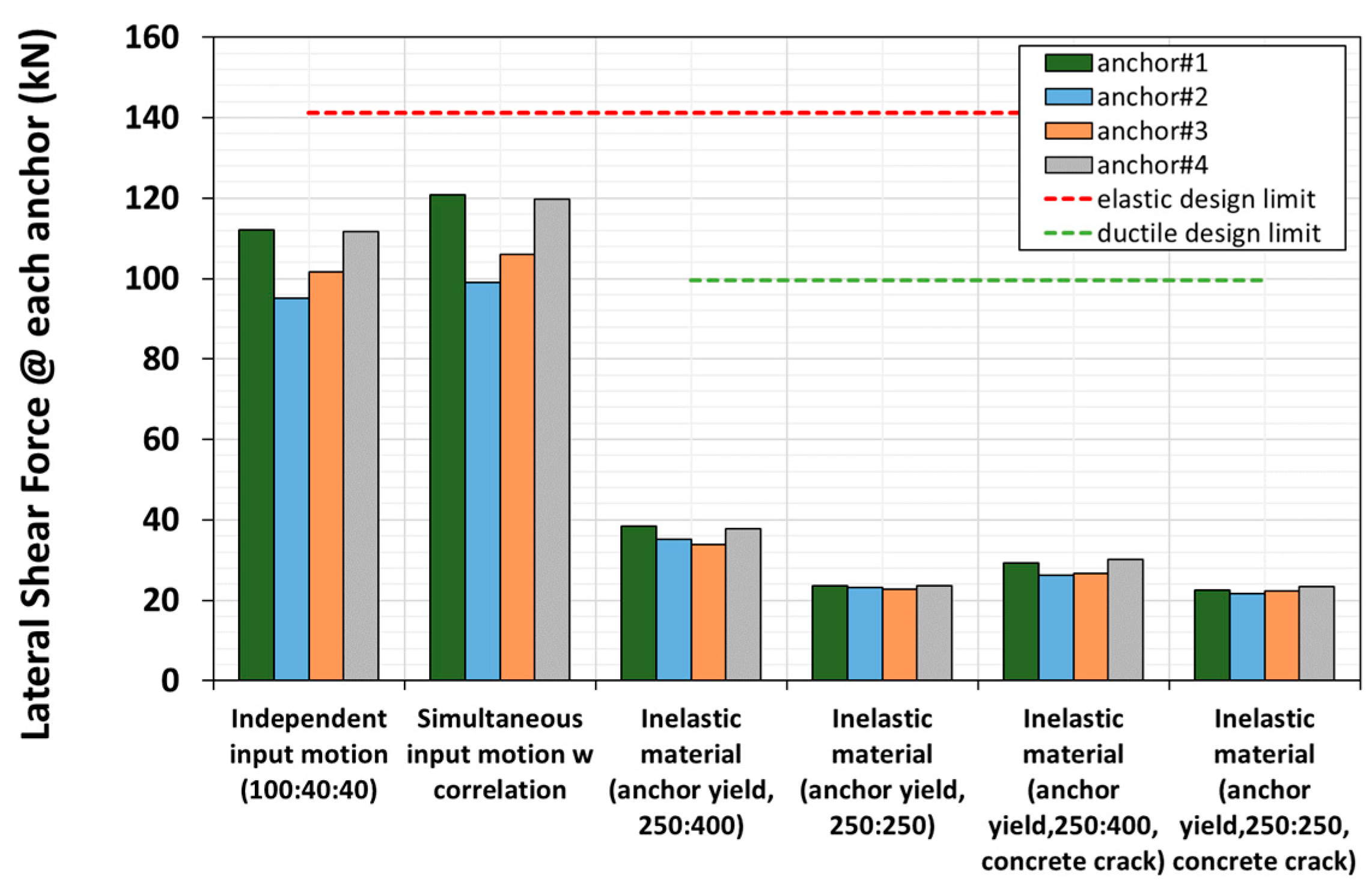
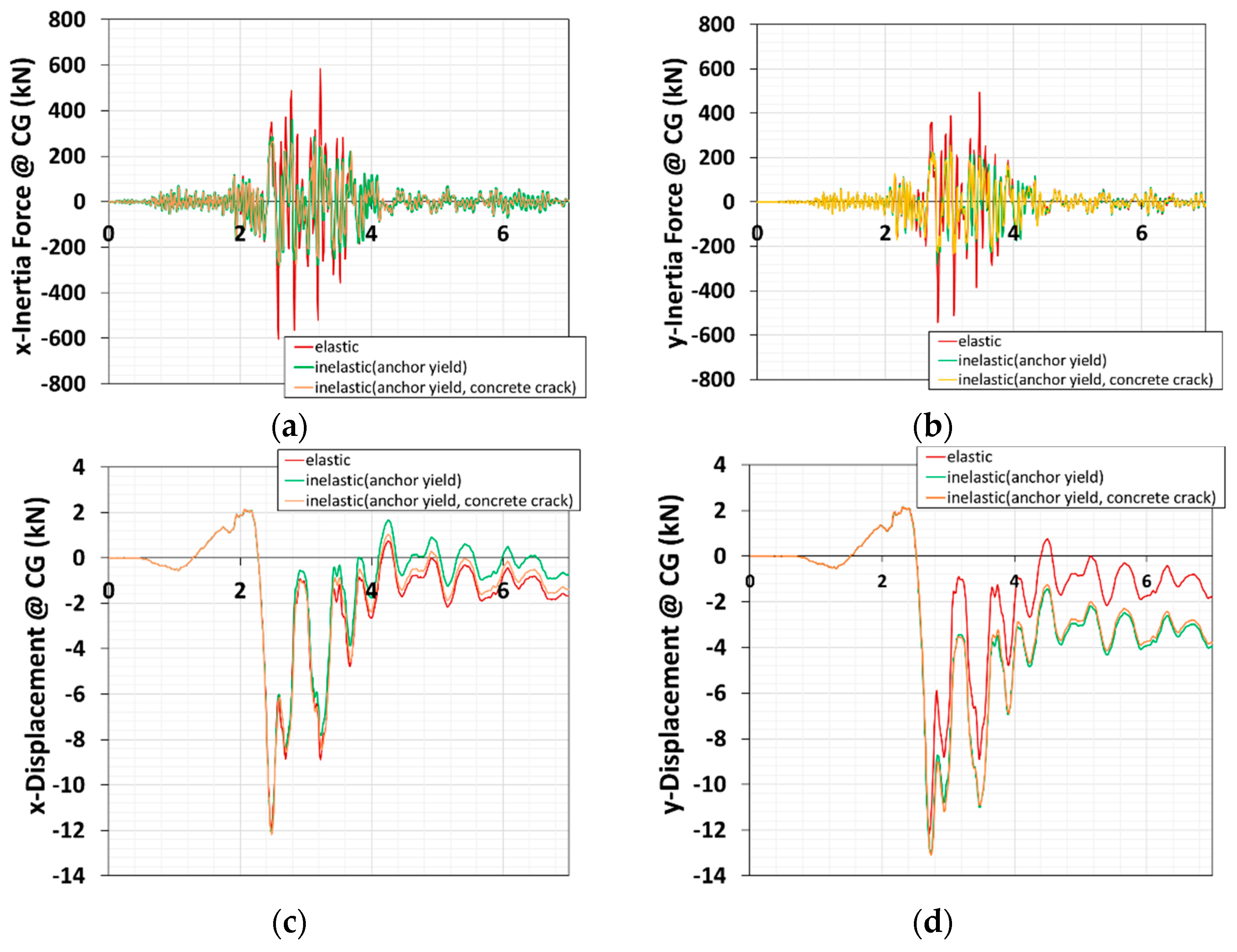
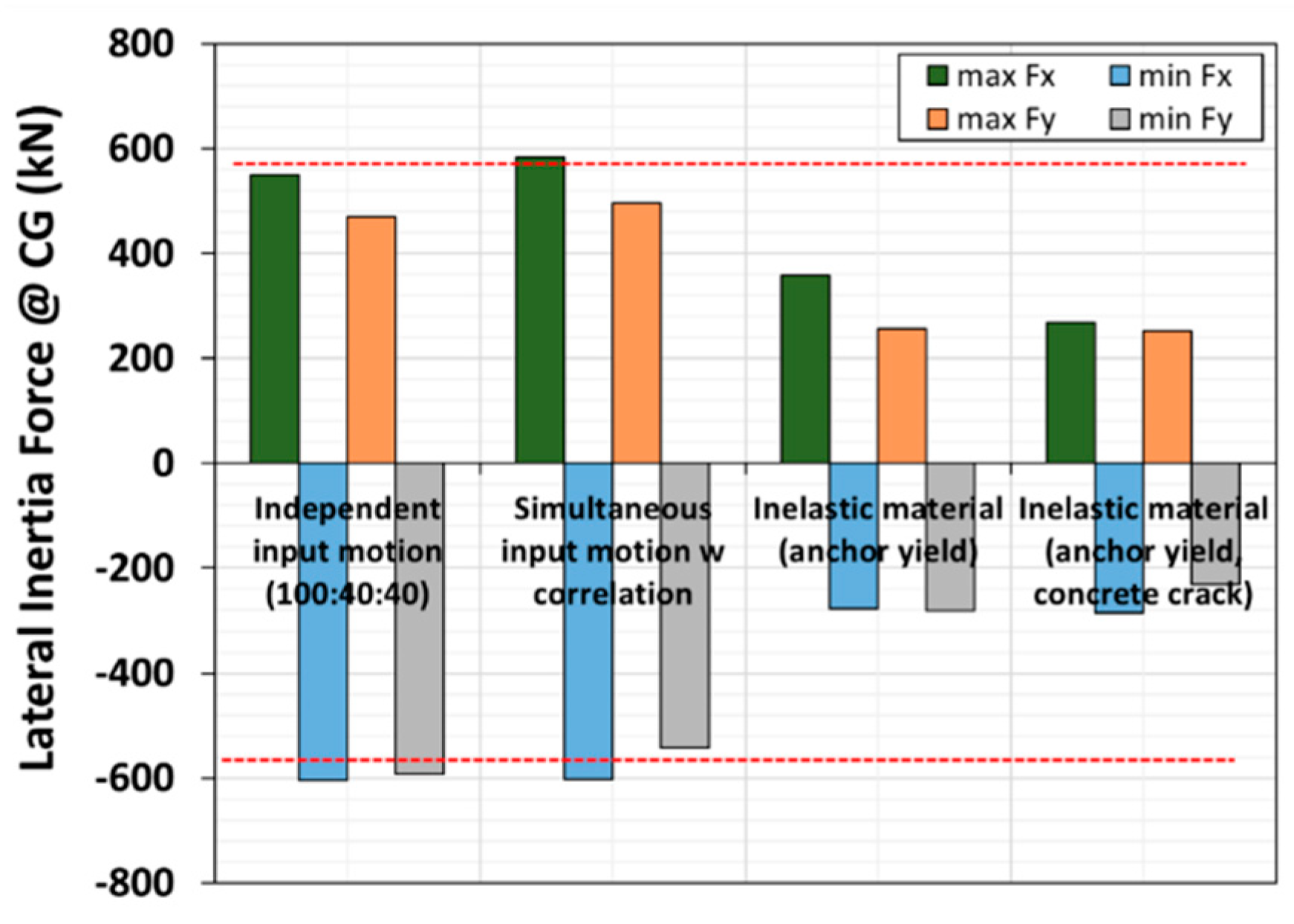
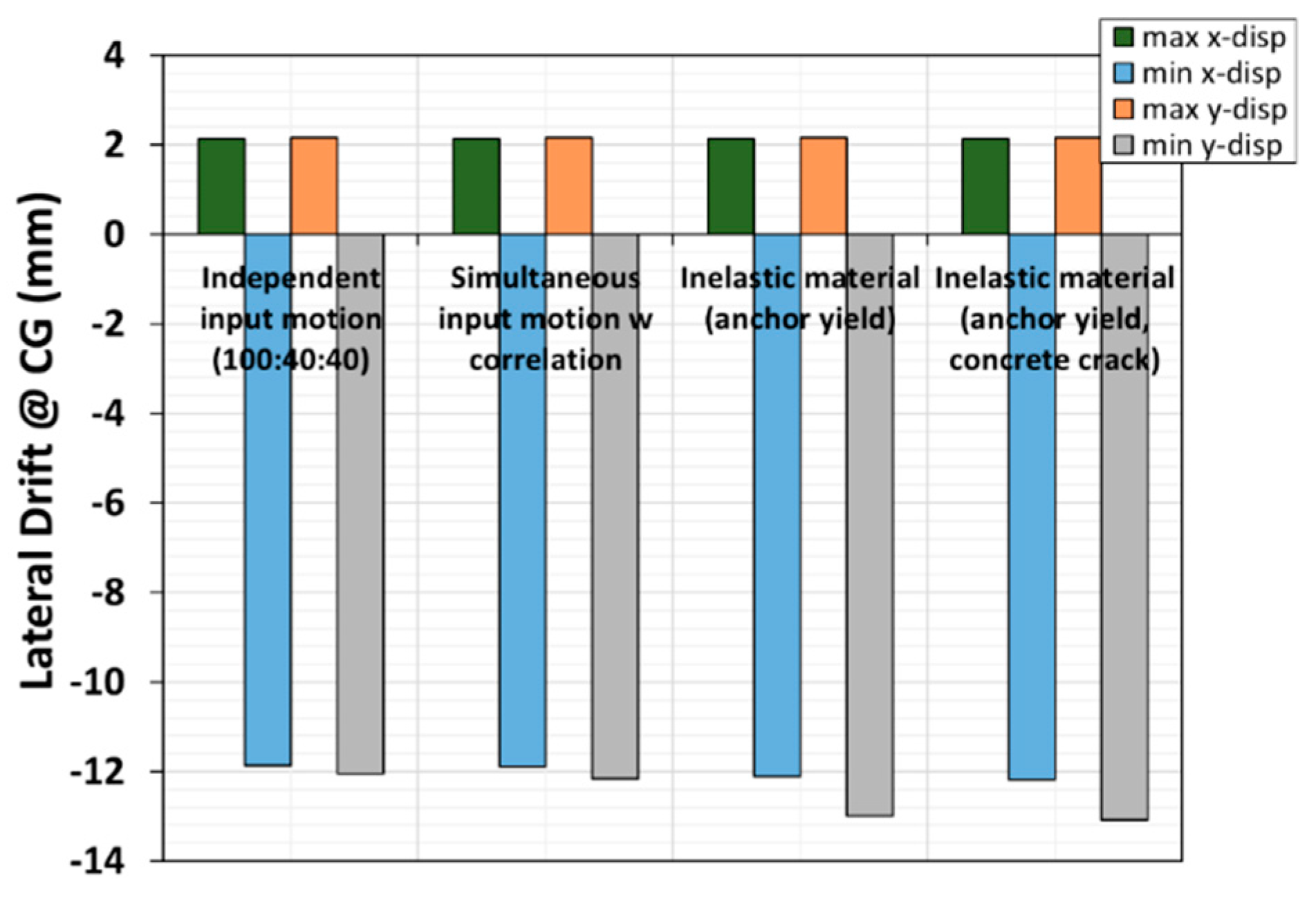
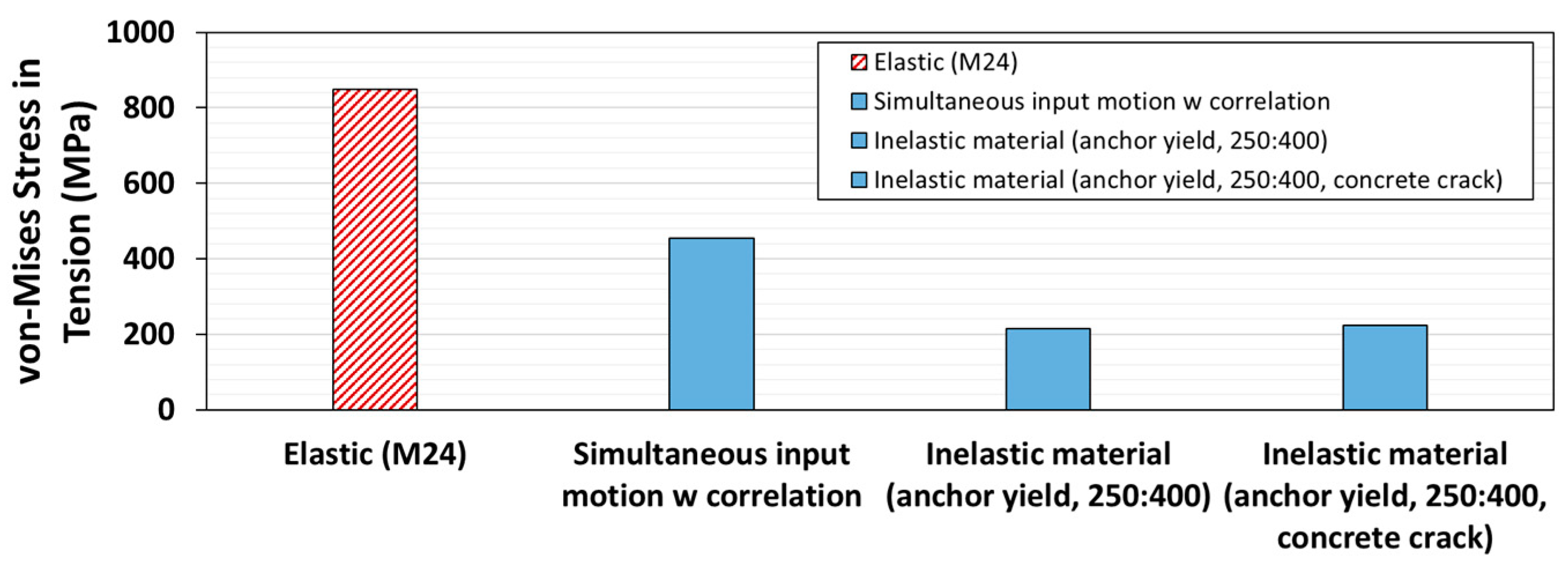

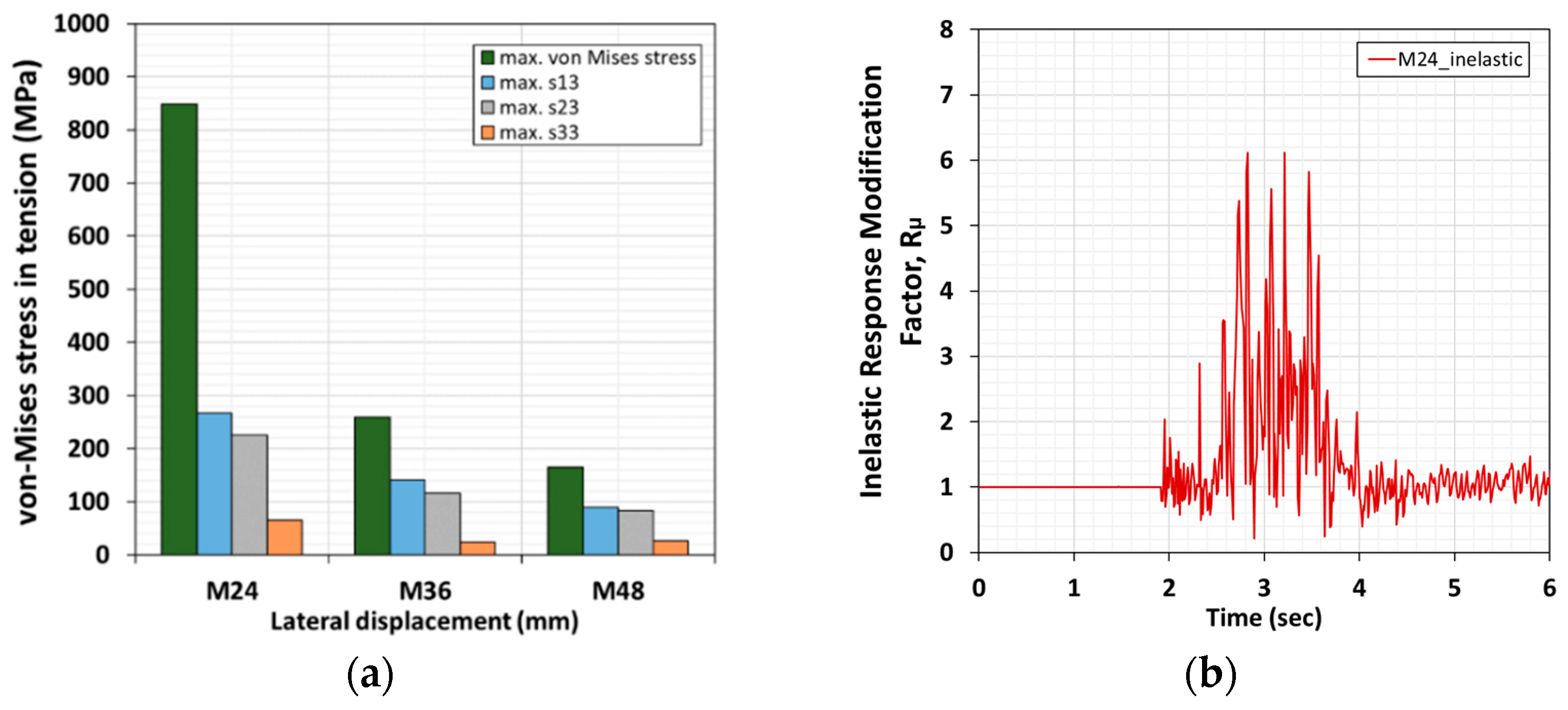
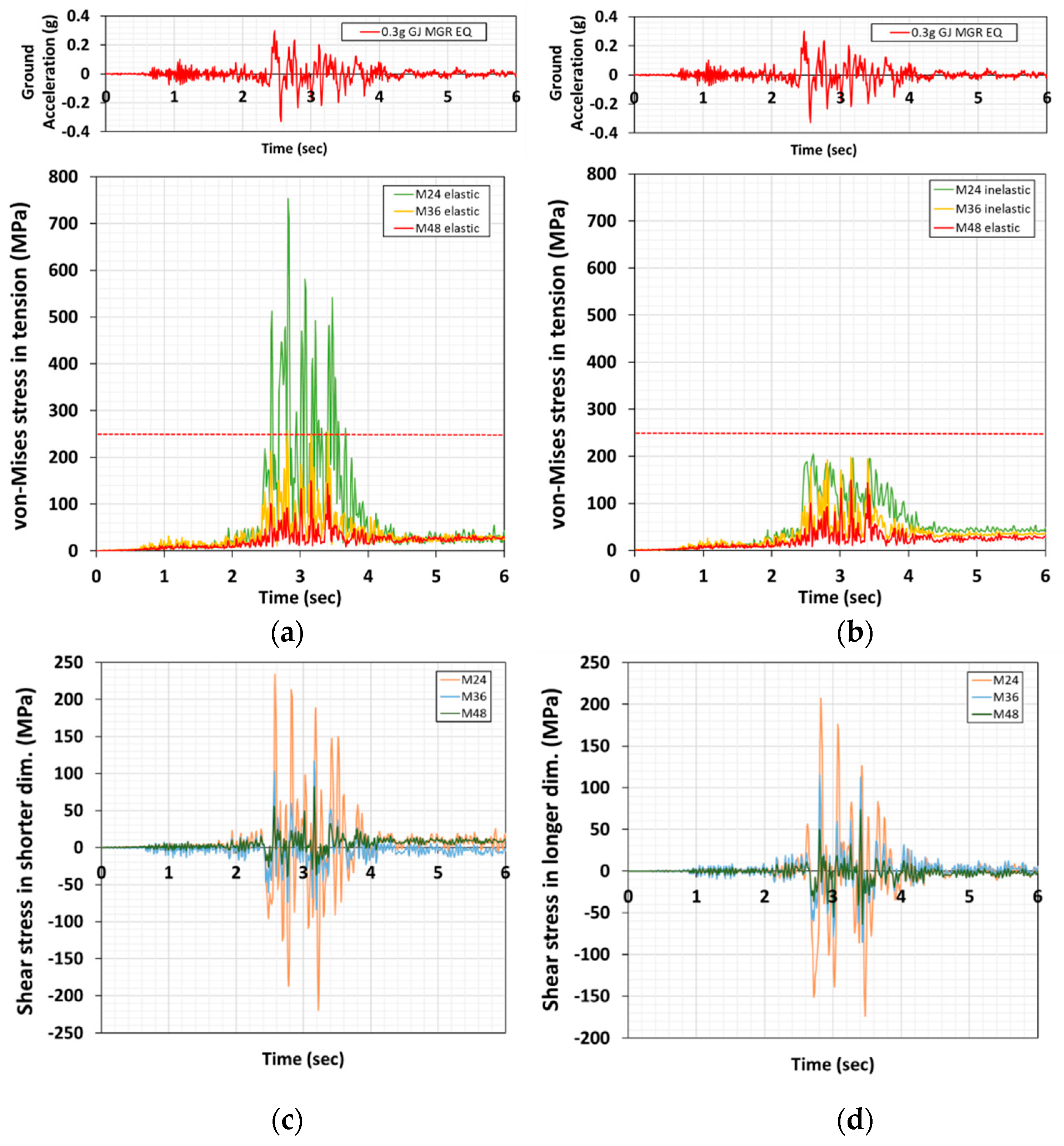
Publisher’s Note: MDPI stays neutral with regard to jurisdictional claims in published maps and institutional affiliations. |
© 2021 by the authors. Licensee MDPI, Basel, Switzerland. This article is an open access article distributed under the terms and conditions of the Creative Commons Attribution (CC BY) license (https://creativecommons.org/licenses/by/4.0/).
Share and Cite
Rhee, I.; Chun, N.; Kim, J.-M. Failure Analysis of a Concrete Anchor under Severe Seismic Action. Appl. Sci. 2021, 11, 10019. https://doi.org/10.3390/app112110019
Rhee I, Chun N, Kim J-M. Failure Analysis of a Concrete Anchor under Severe Seismic Action. Applied Sciences. 2021; 11(21):10019. https://doi.org/10.3390/app112110019
Chicago/Turabian StyleRhee, Inkyu, Nakhyun Chun, and Jae-Min Kim. 2021. "Failure Analysis of a Concrete Anchor under Severe Seismic Action" Applied Sciences 11, no. 21: 10019. https://doi.org/10.3390/app112110019
APA StyleRhee, I., Chun, N., & Kim, J.-M. (2021). Failure Analysis of a Concrete Anchor under Severe Seismic Action. Applied Sciences, 11(21), 10019. https://doi.org/10.3390/app112110019






